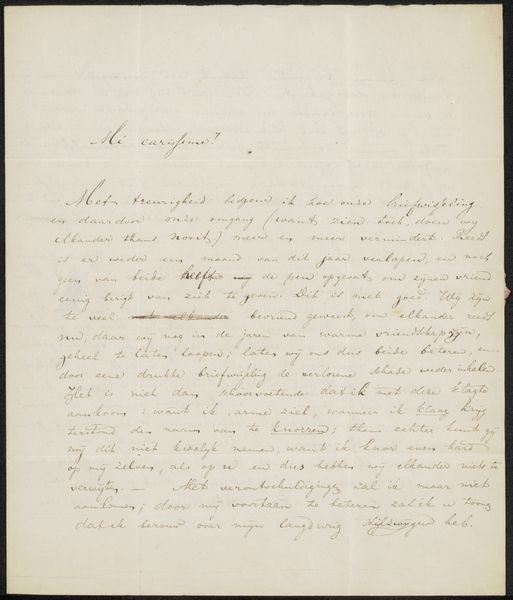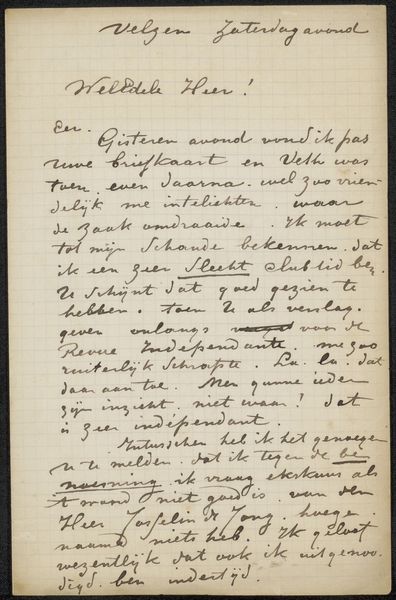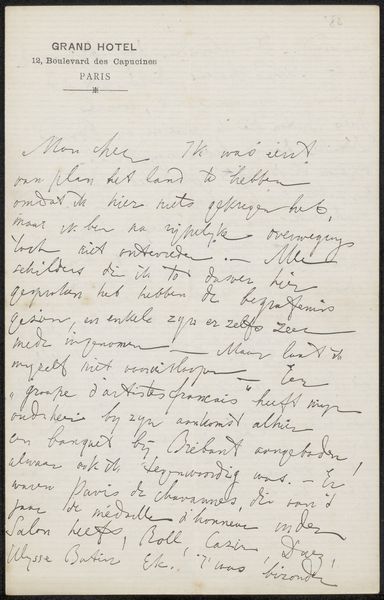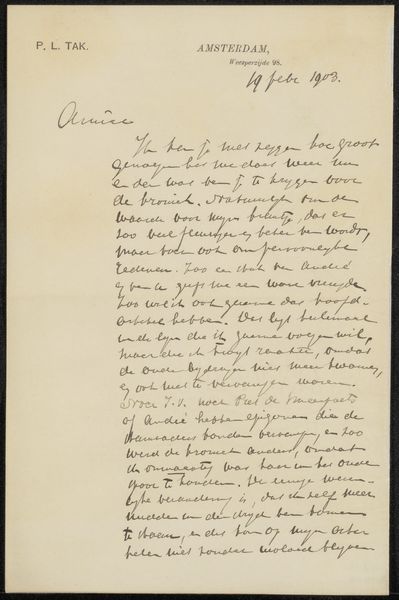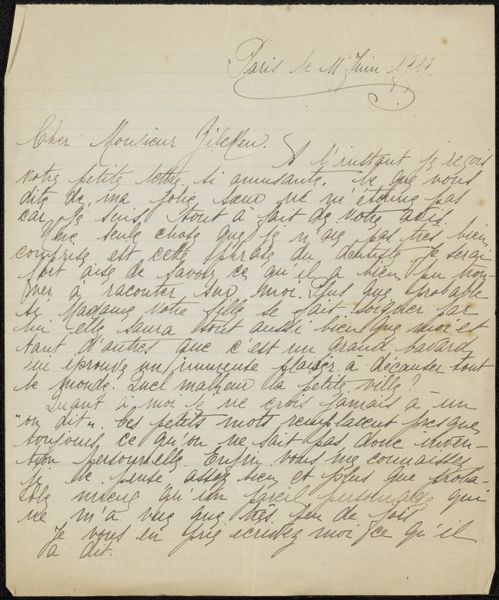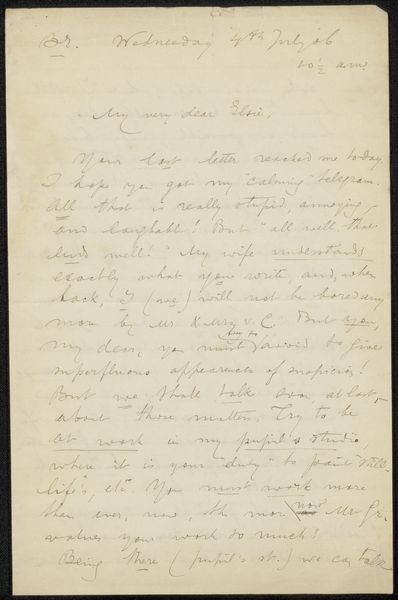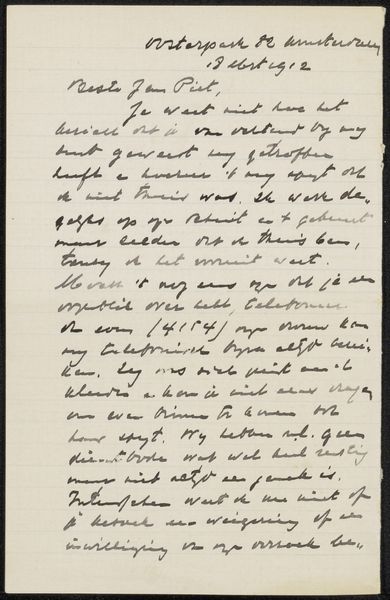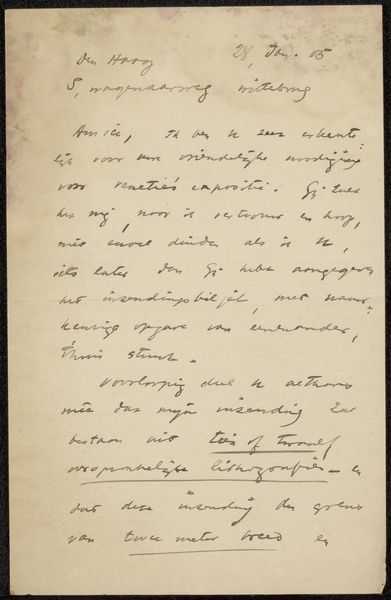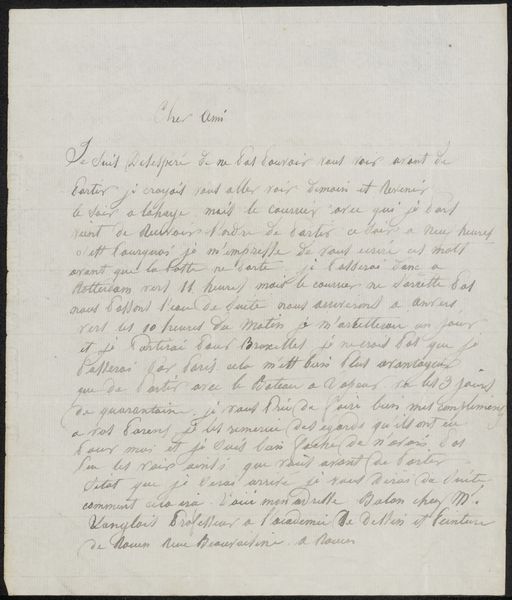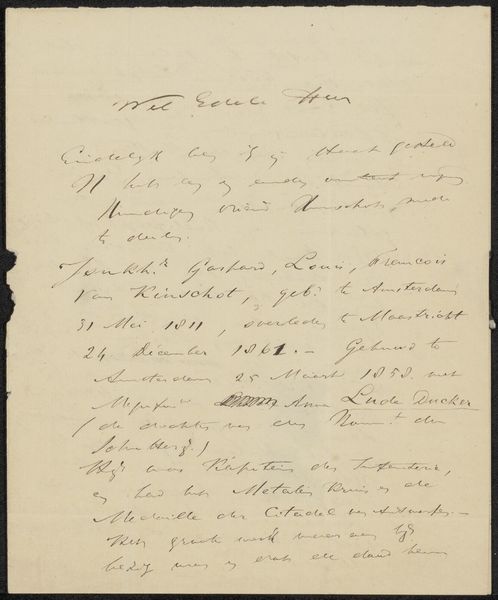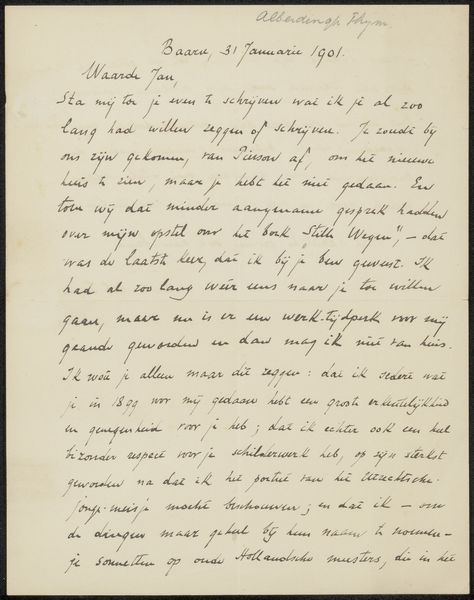
drawing, paper, ink
#
drawing
#
paper
#
ink
#
calligraphy
Copyright: Rijks Museum: Open Domain
Curator: Here we have "Brief aan Philip Zilcken" by Willy Sluiter, likely created between 1901 and 1911. It's currently held at the Rijksmuseum. A drawing composed of ink on paper. Editor: At first glance, the density of the writing is the most noticeable aspect, the effect is really about texture. The way the ink is so richly captured on the page creates a sense of layered history. It has a definite antiquated quality and reminds me of searching for forgotten knowledge. Curator: Absolutely. Looking at this through the lens of its production, it gives us access to Sluiter’s concerns and methods of corresponding at the time. The materiality, specifically the pen, ink and paper stock, all speak to a daily practice deeply entwined with literacy and communication in the early 20th century. Editor: The ink calligraphy itself is wonderfully expressive, with a certain formal beauty within what looks to be someone's ordinary correspondence. The hand conveys energy, almost rushing across the page at certain moments. You can imagine the weight of the hand upon the paper, which gives the document, the letter a physical presence. Curator: I agree. Letters are such interesting material culture because of this blend of formal script and individualized urgency or intimate expression. Letters always connect individuals in different physical contexts. Sluiter clearly was seeking a professional and hopefully favorable result here, requesting recognition for the artist within forthcoming published catalogs. Editor: Precisely, and even without reading Dutch, the rhythmic qualities of the loops and ascenders create a visual dance. Notice too the composition is really determined by the format, creating subtle sections across the visible sheet. I think we are positioned as viewers invited into the quiet intensity of this private exchange. Curator: Letters such as these underscore the art world as being deeply connected to various systems of valuation: price, awards, publications. Seeing that labour is really important. How the circulation of artworks impacts communities in their period and later as an aspect of collections like that of the Rijksmuseum. Editor: Seeing its impact on art and life provides the experience with added meaning. Thank you for exploring this intimate, powerful work.
Comments
No comments
Be the first to comment and join the conversation on the ultimate creative platform.
